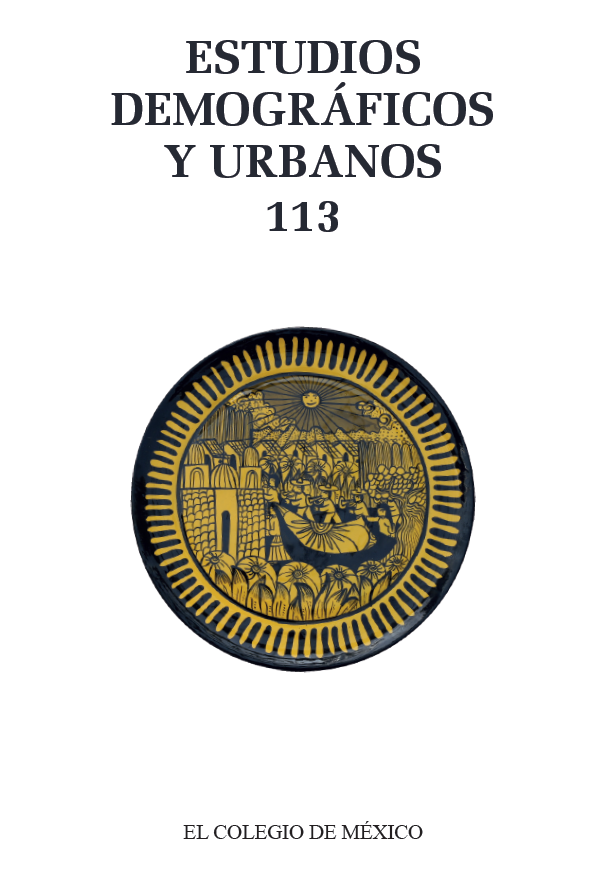Heterogeneity among merchants in Mexico City’s municipal markets
Published 2023-07-13
Keywords
- public markets,
- merchants,
- commerce,
- work conditions,
- inequalities
How to Cite
-
Abstract1279
-
PDF (español)561
-
En línea (español)216
-
EPUB (español)17
-
Kindle (español)24
-
Audio (español)11
Downloads
Copyright (c) 2022 Estudios Demográficos y Urbanos

This work is licensed under a Creative Commons Attribution-NonCommercial-NoDerivatives 4.0 International License.
Metrics
Abstract
In the last decade and after nearly half a century of neglect, Mexico City’s public markets have once again made their appearance on the urban agenda, both in terms of policy and academic studies. This article, drawn on ethnographic fieldwork with merchants in three public markets, contributes to the burgeoning discussion on markets in two ways: 1) it provides a description of the heterogeneity of merchants and vendors in the markets; 2) on the basis of this description, it proposes ways to analyze the different forms of inequalities which occur in the markets, and the way in which these inequalities intersect with differentiated forms of political representation. We suggest that a better understanding of the heterogeneous life and labor conditions of market vendors is essential to the development of more inclusive, efficient and democratic public policies in these essential urban spaces.
References
- Abrams, P., Gupta, A. y Mitchell, T. (2015). Antropología del Estado. Ciudad de México: Fondo de Cultura Económica.
- Cabrera-Jara, N. (2019). Gentrificación en áreas patrimoniales latinoamericanas: cuestionamiento ético desde el caso de Cuenca, Ecuador. Urbe. Revista Brasileira de Gestão Urbana, 11, e20180201. https://doi.org/10.1590/2175-3369.011.e20180201 DOI: https://doi.org/10.1590/2175-3369.011.e20180201
- Cross, J. C. (1998). Informal politics: Street vendors and the State in Mexico City. Stanford University Press. DOI: https://doi.org/10.1515/9780804765114
- Delgadillo, V. (2016). La disputa por los mercados de La Merced. Alteridades, 26(51). https://alteridades.izt.uam.mx/index.php/Alte/article/view/869
- Duhau, E. y Giglia, A. (2016). Metrópoli, espacio público y consumo. Ciudad de México: Fondo de Cultura Económica.
- Echanove Huacuja, F. (2002). Del campo a la ciudad de Mexico: el sendero de las frutas y hortalizas. Ciudad de México: Plaza y Valdés.
- Giglia, A. (2019). Comercio, consumo y cultura en los mercados públicos. Ciudad de México: Universidad Autónoma Metropolitana, Iztapalapa.
- Goldstein, D. M. (2016). Owners of the sidewalk: Security and survival in the informal city. Duke University Press. DOI: https://doi.org/10.2307/j.ctv11cw2tj
- Gonzalez, S. (2019). Contested markets, contested cities: Gentrification and urban justice. Routledge.
- Hayden, T. B. (2019). Traders in uncertainty: Criminal violence, law (lessness) and (dis)order in Mexico City’s Central Food Market. (Tesis de doctorado, New York University).
- Janoschka, M., Sequera, J. y Salinas, L. (2013). Gentrification in Spain and Latin America. A critical dialogue. International Journal of Urban and Regional Research, 38, 1234-1265. https://doi.org/10.1111/1468-2427.12030 DOI: https://doi.org/10.1111/1468-2427.12030
- Lacarrieu, M. (2016). “Mercados tradicionales” en los procesos de gentrificación/recualificación. Consensos, disputas y conflictos. Alteridades, 26(51), 29-41. http://www.scielo.org.mx/scielo.php?script=sci_arttext&pid=S0188-70172016000100029&lng=es&tlng=es
- Marcus, G. E. y Fischer, M. M. J. (1999). Anthropology as cultural critique: An experimental moment in the human sciences. University of Chicago Press. DOI: https://doi.org/10.7208/chicago/9780226229539.001.0001
- Meneses, R. (2011). Legalidades públicas: el derecho, el ambulantaje y las calles en el centro de la Ciudad de México (1930-2010). Ciudad de México: Universidad Nacional Autónoma de México / Centro de Investigación y Docencia Económicas.
- Moctezuma Mendoza, V. (2017). Experiencia y significados simbólicos de los habitantes de conjuntos urbanos de interés social en México: segregación, diferencia y distinción. Estudios Demográficos y Urbanos, 32(3), 487. https://doi.org/10.24201/edu.v32i3.1723 DOI: https://doi.org/10.24201/edu.v32i3.1723
- Ochoa, E. C. (2002). Feeding Mexico: The political uses of food since 1910. Wilmington: SR Books.
- Scott, J. (1998). Seeing like a state: How certain schemes to improve the human condition have failed. Yale University Press.


